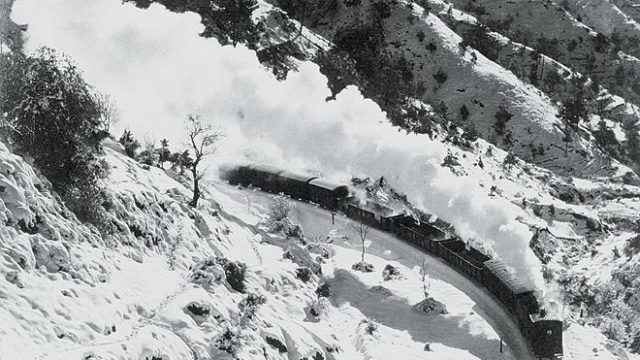In November 1903, a steam engine called the ‘Hill Puffer’ chugged out of Kalka with the viceroy, Lord Curzon on board. Seven hour later, after passing through 109 tunnels (the longest, at Barog, being nearly a kilometer long), crossing 969 bridges, 919 curves and passing 20 railway station it pulled into Shimla, the summer capital of British India.
The Kalka-Shimla toy train had climbed more than 4,800 feet over a distance of 96 km, bringing Shimla within easy reach of travelers from the plains.
In 1864 Lord Bentinck made Shimla the summer capital of the Government of India. However, the journey from the plains to Shimla was cumbersome. The Great Hindostan and Tibet road which was opened in 1856 was for all practical purposes more dirt track than road. The journey was long and uncomfortable, and often dangerous when it snowed. The toy train on the other hand, while not reducing journey time significantly, made the journey much more enjoyable—weaving leisurely through dense forests of pine and deodar, and clinging to sheer mountainsides.
The first stop of the train is Dharampur, at a height of 4,900 feet and a distance of 27 km from Kalka. Three loops at Taksal, Gumman, and Dharampur allowed the train to navigate the steep gradients. After leaving Dharampur the rail line passes through a series of tunnels to get to Tara Devi. The line then descends to Solan and Kandaghat (4,667 feet) where it starts ascending to Shimla.
Twenty delightfully old-worldly blue and white gothic stations (some of the accessible only on foot) dot the route. Most of them are complete with red roofs, wooden porches and comfortable wooded benches on the platforms. Memorabilia from the Raj adorns their walls—S.W Benson clocks from 1903, hand painted crockery from the Mother country, and even something called the Neals Token Instrument System, which is still used to establish communications between stations. Each of these stations along the route is located next to bridges, which rise like Roman aqueducts from deep ravines. Some of them have as many as four storeys. And the tunnels that come at regular intervals between the stations are illuminated by sunlight which is reflected in by mirrors.
The winter of 1944 was particularly harsh. This photograph was taken at Kumarhatti, near Solan, an area which rarely ever gets snow. At that time the metre-gauge train was used to ferry goods to the hill station in winter, when the road journey could end up taking much longer. Dense plumes of white smoke rise merge with the carpet of snow, as the train waits at a signal.




